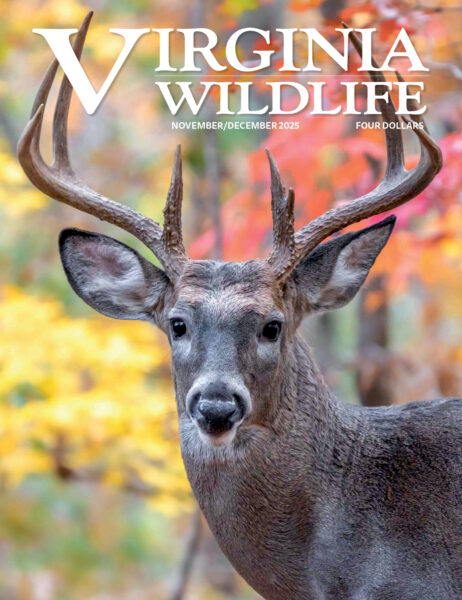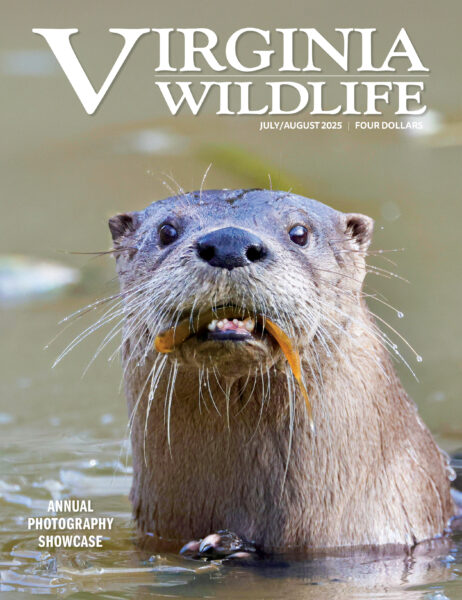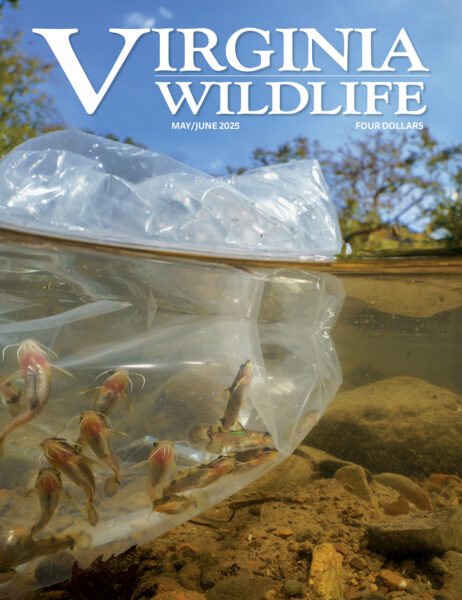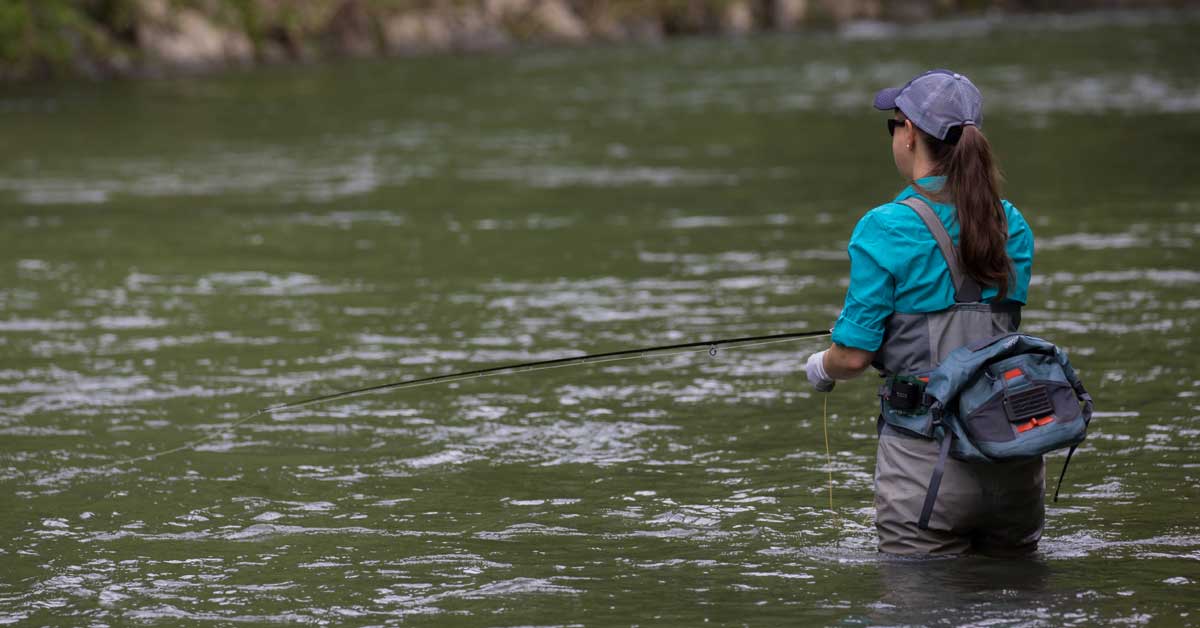
By David Hart
Photos by Meghan Marchetti/DWR
Some trout streams are just, well, special. They might have lots of wild trout, they may have some big fish or they might be unique in some other way. Whatever they are, the 40 rivers and streams designated as “special regulation” all have one thing in common: They are high-quality fisheries that provide days of fun and relaxation to thousands of anglers every year.
They include everything from hop-across native brook trout streams and grass-lined spring creeks to big, bold tailwater rivers and mountain streams loaded with wild rainbow and brown trout. Some are catch-and-release. A few have tackle restrictions. Others have slot limits or minimum size requirements to protect certain sizes of trout.
“Biologically speaking, minimum size limits, slot limits or a combination of other regulations are designed to protect the size structure of the trout,” says DWR district fisheries biologist Steve Reeser. “In the past, they were generally meant to increase overall populations, but the catch-and-release ethic is pretty much the norm among many trout anglers now. That does the same thing.”
So why do we still place special regulations on some streams if fewer anglers are keeping wild trout? Simple. Trout anglers love them.
“A growing number of trout anglers are seeking a different experience than they can get on designated stocked trout waters. They are less interested in harvesting fish and are more interested in a greater challenge, as well as catch-and-release opportunities,” says Reeser. “Special regulation streams give those anglers an opportunity to fish for wild trout with a high probability of success.”
That’s why the number of special regulation streams has increased over the past decade or so. For a complete list, visit the Special Regulation Trout Waters section of the DWR website. In the meantime, here is a look at some of our top special regulation trout waters.
Jackson River Tailwater, Alleghany County
It’s true that access is sketchy on a large part of this 20-mile long tailwater trout fishery below Lake Moomaw. Thanks to a 1996 Virginia Supreme Court ruling, some landowners have exclusive rights to the stream bottom and the trout that hover over that bottom. As such, those sections of the Jackson River are off-limits.
Don’t let that scare you away from this first-class fishery. Although many sections are posted, there is enough accessible water to keep an angler busy for a long day. One of the best lies just below Gathright Dam. A half-mile section of flat pools, powerful rapids and fast riffles is administered by the U.S. Army Corps of Engineers (USACOE ) and is chock full of rainbow and brown trout.
“There are five public access sites located between Natural Well and Covington where anglers can access the river to float-fish. A map showing the locations of the public access areas can be found on the DWR website,” adds Reeser.
Anglers are allowed to use any method, including live bait, and they can keep up to four trout. All rainbows between 12 and 16 inches must be released and only one brown trout over 20 inches may be kept.
“There is some harvest, but it does not seem to be having any impact on the quality of this fishery,” says Reeser.
High water releases can make wading dangerous, so make sure you check the release schedule before traveling to the Jackson. A Google search of “Gathright Dam release schedule” will bring you to an USACOE website showing planned releases for two days.
Flows below 600 cubic feet per second are safe for wading, but always wade with caution.
Ramsey’s Draft, Augusta County
Virginia has about 2,000 miles of wild brook trout streams and many of them are loaded with fish. Ramsey’s Draft, located in the Ramsey’s Draft Wilderness Area in the George Washington and Jefferson National Forest, is one of those high-quality wild brook trout fisheries. It is also one of Reeser’s personal favorites.
“It has an excellent population of native brook trout, although populations can vary from year to year based on spawning success,” he says. “It does get some pressure, but there is plenty of room to get away from other anglers.”
Ramsey’s Draft is located about 20 miles west of Staunton and consists of about four miles of runs, riffles, pools, and falls. A trail parallels the entire length of the stream, offering easy access to the best water. Anglers are restricted to single-hook, artificial lures only and no fish less than 9 inches may be kept.
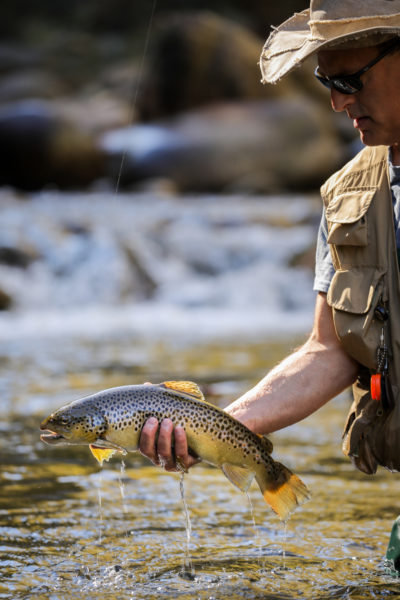
Buffalo Creek, Rockbridge County
Four miles of spring-fed, freestone stream offers a variety of high-quality trout habitat. Deep, slow pools protected by a tangle of overhanging limbs are home to the biggest trout, but lots of quality fish can be found in the bold riffles and swift pools throughout.
The stream flows through flat farmland and forest and access is abundant along most of the public water. One section requires a moderate hike to reach.
“All of the special regulation waters of Buffalo Creek are on private land, but those landowners allow us to manage the fishery while allowing public access. It is a great example of a cooperative effort between private landowners and our Department,” says Reeser.
The stream is stocked with advanced fingerlings, about 5 or 6 inches, but they grow fast, adds Reeser. There are lots of trout in the 10- to 14-inch range, with some over 18 inches scattered throughout.
Buffalo Creek regulations include a 16-inch minimum size and two-fish per day limit. Anglers are restricted to single-hook, artificial lures and a free landowner permit is required to fish here. It can be downloaded by signing in to your gooutdoorsvirginia account.
South Fork, Holston River, Smyth County
Two special-regulation sections offer a combined five miles of high-quality trout fishing opportunities in southwest Virginia. One lies within the Buller Fish Cultural Station and stretches for about a mile. It is loaded with wild rainbow and brown trout and is supplemented with occasional stockings of large adult fish up to 20 inches. This section is catch-and-release, single-hook, artificial lure only and is a popular destination among fly anglers.
The upper section, also popular with fly anglers, includes four miles of the South Holston and runs almost entirely through National Forest land. Public access is limited to a few trailheads, making this a great destination for anglers who want to avoid crowds. It has good populations of rainbows and browns. Most are in the 8- to 12-inch range, with a few over 16 inches. Only two fish over 16 inches may be kept and anglers are restricted to single-hook, artificial lures.
Whitetop Laurel, Washington County
Spend a day on Whitetop Laurel and you will see why Trout Unlimited ranked it one of America’s Top 100 trout waters. Cold, clear water flows around moss-covered boulders and under rhododendrons hanging over the water. When the flowers are in bloom, Whitetop is nothing short of stunning. In addition, it is loaded with quality rainbows and browns with a few brookies scattered about, as well.
One section in Taylor’s Valley is stocked as put-and-take water, but a large portion of Whitetop within the National Forest is under a 12-inch minimum size limit. Anglers are restricted to single-hook, artificial lures only in the special regulation section, as well.
Access is limited to a handful of parking areas along the Virginia Creeper Trail, but the trail parallels the entire length of the stream. The well-maintained path is popular with hikers, wildlife watchers, and bicyclists because of the steady downhill grade. However, few of those bikers come to fish. Too bad. A bike is a great way to reach more remote sections of Whitetop. Just bike until you see good water, fish for a bit and pedal down to the next fishy spot.
Buy Your License
This article originally appeared in Virginia Wildlife Magazine.
For more information-packed articles and award-winning images, subscribe today!
Learn More & Subscribe


